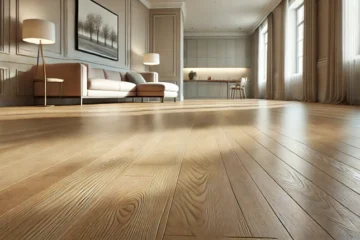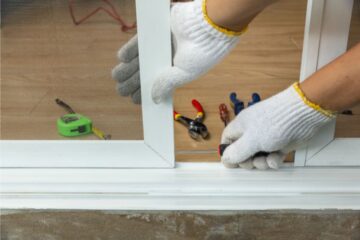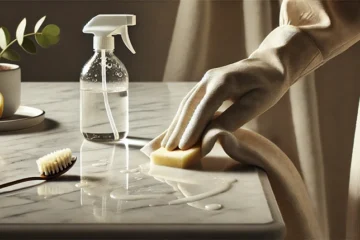Essential Tips for Treating Unfinished Wood Furniture

Unfinished wood furniture offers a timeless and versatile aesthetic that can enhance any room in your home. However, without the right care, this raw, natural material can be prone to damage. Whether you’re planning to give your furniture a rustic look or simply want to protect it from the elements, learning how to treat unfinished wood is essential. In this article, we’ll explore the best ways to preserve, enhance, and maintain the beauty of your unfinished wood furniture.
What Makes Unfinished Wood Furniture Unique?
Unfinished wood furniture is exactly what it sounds like—furniture pieces that have not been coated with a protective layer such as paint, varnish, or sealant. This type of wood is popular because it offers a natural, raw look that fits well with various styles of décor, from minimalist to farmhouse chic. However, unfinished wood is more susceptible to scratches, stains, and water damage, making it crucial to treat it properly.
How Can You Tell If Wood Furniture is Unfinished?
If you’re unsure whether your furniture is unfinished, there are a few simple ways to check. Run your hand along the surface. If it feels rough or dry, it is likely unfinished. Another way to tell is by observing the color of the wood. Unfinished wood tends to look lighter and more matte compared to finished wood, which usually has a glossy or polished appearance.
Why Should You Treat Unfinished Wood Furniture?
Without proper treatment, unfinished wood furniture can become vulnerable to various issues. Here are some reasons why treating it is important:
- Protection: Unfinished wood is more likely to absorb moisture, which can lead to warping or cracking over time. Treating the wood adds a protective barrier.
- Longevity: Proper treatment can significantly extend the life of your furniture, preventing it from deteriorating prematurely.
- Appearance: Treating unfinished wood can enhance its natural beauty by deepening its color and bringing out the grain patterns.
What Are the Best Products for Treating Unfinished Wood Furniture?
There are several options when it comes to treating unfinished wood furniture. Each product has its own set of benefits depending on your needs and the look you’re going for.
1. Oils for a Natural Finish
If you’re looking to maintain the natural look of your unfinished wood while still providing some level of protection, oils are a great choice. Popular oils include linseed oil, tung oil, and mineral oil. These oils penetrate the wood fibers, adding a layer of protection without changing the wood’s color too much.
Helpful Hint:
When using oils to treat unfinished wood, be sure to reapply the oil periodically, as it can wear off over time. A good rule of thumb is to reapply every six months for optimal protection.
2. Wax for a Smooth Finish
Wood wax is another option that offers a more polished, smooth finish. It’s especially useful for smaller pieces of furniture or areas where you want to add a subtle sheen without the need for heavy-duty protection. Wax provides a water-resistant barrier but may need frequent reapplication in high-use areas.
3. Sealants for Maximum Protection
If you’re aiming for maximum protection from moisture, dirt, and wear, sealants are your best option. Polyurethane and varnish are common choices for creating a durable, water-resistant barrier that keeps your furniture safe from the elements. While these products alter the natural look of the wood by adding a glossy or satin finish, they offer the highest level of protection.
Comparison of Treatment Methods for Unfinished Wood Furniture
| Treatment Method | Protection Level | Effect on Appearance | Reapplication Frequency |
|---|---|---|---|
| Oil (Linseed, Tung, etc.) | Moderate | Natural look, deepens wood grain | Every 6-12 months |
| Wax | Low to Moderate | Subtle sheen, maintains natural feel | Every 3-6 months |
| Sealants (Polyurethane, Varnish) | High | Glossy or satin finish | Every 1-2 years |
| Wood Conditioner | Pre-treatment | Prepares wood for even staining | Before applying stain |
How to Apply Oils, Waxes, and Sealants to Unfinished Wood
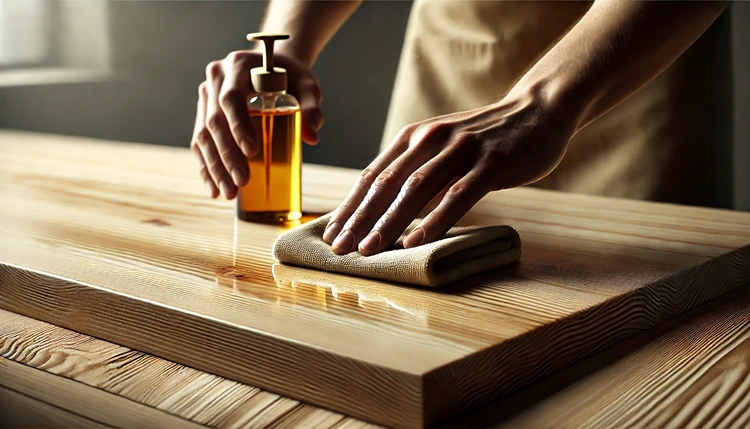
When treating unfinished wood furniture, the application process is just as important as the products you use. Here’s a step-by-step guide to help you apply oils, waxes, and sealants effectively:
- Prepare the Surface: Begin by sanding the wood with fine-grit sandpaper to remove any rough edges or imperfections. Make sure the surface is clean and free of dust before proceeding.
- Apply the Treatment: Using a clean cloth, apply your chosen product (oil, wax, or sealant) in the direction of the wood grain. For oils, apply liberally, allowing the wood to soak it in before wiping off the excess. For wax, apply sparingly and buff the surface afterward. Sealants may require multiple coats for full protection.
- Allow Time to Dry: Depending on the product, drying times can vary. Oils typically require 24 to 48 hours, while sealants might need up to a week to cure completely. Always check the manufacturer’s instructions for the exact drying time.
- Reapply as Needed: Over time, even treated wood can start to show signs of wear. Reapply your chosen treatment periodically to maintain the protection and appearance of the wood.
How Can You Protect Unfinished Wood Furniture from Stains?
One of the biggest challenges of unfinished wood furniture is preventing stains. Because the wood is porous, it can absorb liquids easily, leading to permanent marks. Here’s how you can protect your furniture from common stains:
- Use Coasters and Placemats: Always use coasters under drinks and placemats under food to prevent spills from directly touching the wood.
- Avoid Water Exposure: Water is one of the most damaging substances for unfinished wood. Be sure to wipe up any spills immediately to avoid stains or warping.
- Apply a Water-Resistant Finish: To protect against water damage, consider applying a water-resistant finish such as polyurethane.
Is Regular Cleaning Important for Unfinished Wood Furniture?
Cleaning unfinished wood can be tricky because it lacks the protective coating that prevents dirt and grime from sinking into the surface. However, with the right approach, you can keep your furniture clean without damaging it:
- Dust Frequently: Use a microfiber cloth to dust your furniture regularly. This will help prevent the buildup of dirt and grime.
- Avoid Harsh Cleaners: Never use harsh chemical cleaners on unfinished wood. Instead, opt for a mild soap and water mixture, and be sure to dry the surface thoroughly afterward.
- Use a Wood-Safe Cleaner: If you need to clean more thoroughly, use a cleaner specifically designed for unfinished wood.
When Should You Re-Treat Unfinished Wood Furniture?
Unfinished wood furniture requires regular maintenance to stay in good condition. So, how often should you retreat your furniture? Here are a few signs that it’s time to reapply oil, wax, or sealant:
- Fading Color: If the wood looks dull or faded, it’s time for a refresh.
- Rough Texture: If the surface feels rough or dry, reapply your treatment to restore its smoothness.
- Water Spots: Water spots are a clear sign that the protective barrier has worn off and needs to be reapplied.
Helpful Hint:
For outdoor unfinished wood furniture, consider reapplying a protective treatment every 6 to 12 months. Weather and environmental conditions can cause outdoor wood to degrade faster than indoor furniture.
How to Handle Scratches and Dents on Unfinished Wood Furniture
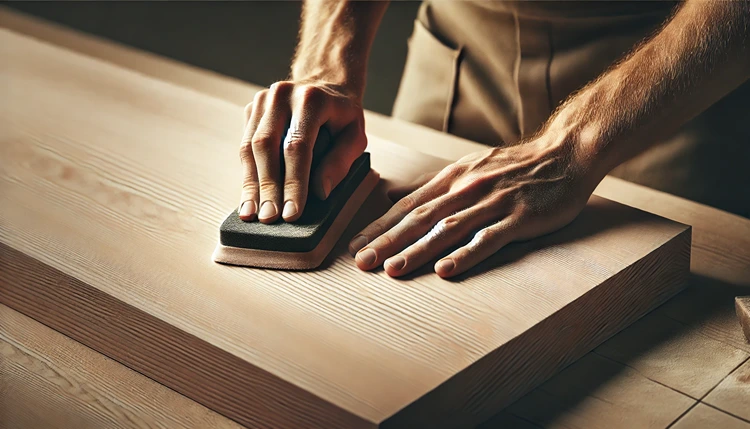
One of the downsides of unfinished wood furniture is that it can be more vulnerable to scratches and dents. Fortunately, there are ways to minimize or even completely fix these imperfections, keeping your furniture looking its best.
1. Sanding Out Minor Scratches
If your furniture has a minor scratch, sanding is usually the simplest way to fix it. Here’s how to do it:
- Choose the Right Sandpaper: For light scratches, use a fine-grit sandpaper (around 220-grit) to gently sand the scratched area. Be careful not to sand too much, as this could create a dip in the surface.
- Sand Along the Grain: Always sand in the direction of the wood grain. Sanding against the grain can cause more damage and create noticeable marks.
- Reapply the Finish: After sanding, clean the surface to remove any dust and reapply your chosen finish, whether it’s oil, wax, or sealant, to blend the repaired area with the rest of the wood.
2. Removing Deeper Dents and Gouges
For deeper dents and gouges, you’ll need a more intensive approach. A common technique for treating unfinished wood is using steam to lift the wood fibers back to their original position. Here’s how you can do it:
- Moisten the Area: Dampen a cloth with water and place it over the dent.
- Apply Heat: Use an iron set to medium heat and place it over the damp cloth for 10-15 seconds. The steam will cause the wood fibers to expand and lift the dent.
- Sand and Refinish: Once the wood has dried, lightly sand the area and apply your finish to restore the surface.
Helpful Hint:
If you’re dealing with a particularly deep gouge that steam can’t fix, wood filler might be your best option. Apply the filler, sand it smooth once it dries, and then refinish the area to match the rest of the wood.
Should You Use Wood Conditioner on Unfinished Wood Furniture?
If you plan to stain or finish your unfinished wood furniture, a wood conditioner is often recommended to ensure an even, consistent finish. Without a conditioner, the wood may absorb the stain unevenly, leading to blotches and streaks.
When to Use a Wood Conditioner
Wood conditioners are especially important when working with porous woods like pine or maple, which can absorb stains unevenly. However, even with harder woods, using a conditioner before applying stain can help the wood take on a richer, more uniform color.
How to Apply Wood Conditioner
- Sand the Surface: As with any wood treatment, start by sanding the surface to ensure smooth, even application.
- Apply the Conditioner: Use a clean brush or cloth to apply the conditioner in long, even strokes. Let it sit for about 10 to 15 minutes.
- Wipe Off Excess: After the conditioner has soaked in, wipe away any excess product with a clean, dry cloth.
- Proceed with Staining: Once the conditioner has dried, you can apply your stain or finish as usual. The wood should now absorb the color more evenly.
What’s the Best Way to Finish Unfinished Wood Furniture?
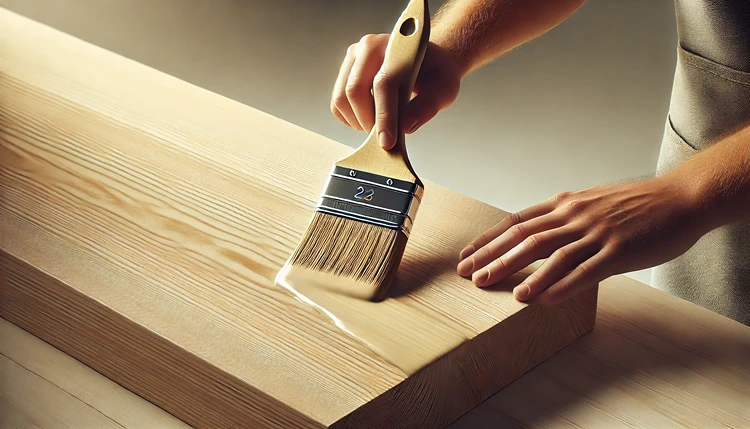
Finishing your unfinished wood furniture is essential for both protection and aesthetic appeal. There are various finishes to choose from, depending on the level of protection and the look you’re aiming for.
1. Staining for Color Enhancement
Wood stains are designed to change the color of your unfinished wood while enhancing the natural grain. They come in a wide range of shades, from light oak to deep walnut, allowing you to customize the look of your furniture.
When applying stain, follow these steps:
- Sand the Wood: Start by sanding the surface to ensure smooth and even application.
- Apply the Stain: Use a cloth or brush to apply the stain in the direction of the wood grain. Let it soak in for a few minutes before wiping off any excess with a clean cloth.
- Allow to Dry: Depending on the type of stain, drying times can vary. Check the manufacturer’s instructions for drying time and apply additional coats if a deeper color is desired.
2. Clear Finish for Natural Protection
If you want to preserve the natural color of the wood without adding a stain, a clear finish like polyurethane or lacquer is a great choice. These finishes protect the wood from moisture, scratches, and other damage while maintaining its natural beauty.
3. Paint for a Pop of Color
While many people prefer to keep unfinished wood in its natural state, painting your furniture can add a bold, personal touch. Use a high-quality primer before applying paint to ensure the color adheres properly and lasts longer.
Stats:
According to a recent survey, 68% of homeowners prefer to apply a clear finish to their unfinished wood furniture, with only 22% opting for paint as a finishing method. Clear finishes are favored for maintaining the wood’s natural appearance and offering a high level of protection.
Does the Type of Wood Matter When Treating Unfinished Furniture?
Yes, the type of wood used in your furniture can affect how you treat and maintain it. Some woods are harder, more durable, and less porous, while others are soft and absorb moisture more easily. Here’s a look at some common types of wood and how to care for them:
1. Oak
Oak is a popular choice for unfinished wood furniture due to its durability and attractive grain. It takes finishes well, making it easy to stain or treat. However, oak is also highly porous, so applying a good sealant is essential to protect it from moisture and spills.
2. Pine
Pine is a softer wood, which makes it more susceptible to dents and scratches. It’s also highly absorbent, so be sure to use a wood conditioner before staining or finishing pine to prevent blotches.
3. Maple
Maple is a hardwood that’s less porous than oak or pine, but it can still benefit from a protective finish. Its smooth texture and light color make it a great candidate for clear finishes or light stains.
How Can You Preserve the Natural Look of Unfinished Wood?
If you love the raw, organic beauty of unfinished wood and don’t want to alter its appearance too much, there are ways to protect the furniture without changing its natural look:
- Use a Clear Oil: As mentioned earlier, oils like tung oil or mineral oil can enhance the wood’s natural color while providing a protective layer.
- Opt for Matte Sealants: Matte sealants offer protection without adding the glossy finish that some people find too shiny for a natural look.
- Wax for Subtle Shine: Wax can provide a smooth, soft finish that enhances the wood’s grain without altering its natural look too much.
How to Properly Clean and Maintain Unfinished Wood Furniture
Cleaning unfinished wood can be tricky because the lack of a protective layer makes it more vulnerable to damage from water and harsh cleaning agents. However, with a few simple strategies, you can keep your unfinished wood furniture looking clean and well-maintained for years.
1. Dry Dusting: The Safest Cleaning Method
Since unfinished wood absorbs liquids easily, dry dusting is the safest way to clean your furniture regularly. Use a microfiber cloth to gently remove dust from the surface. Avoid using feather dusters, as they can sometimes scratch the wood.
2. Spot Cleaning with Mild Soap
If you need to remove stains or sticky spots, use a small amount of mild dish soap diluted in water. Dampen a soft cloth with the solution and gently wipe the affected area. Immediately dry the surface with another clean cloth to prevent water absorption.
3. Avoid Harsh Chemicals
Harsh chemicals, like bleach or ammonia-based cleaners, can severely damage unfinished wood by stripping its natural oils. Stick to gentle, wood-friendly cleaning solutions to keep your furniture in good condition.
What Tools Should You Use for Cleaning Unfinished Wood?
The tools you use to clean unfinished wood furniture are just as important as the cleaning products themselves. Here are a few tools that can make the job easier and safer:
- Microfiber Cloths: These are ideal for dusting and spot cleaning without scratching the wood surface.
- Soft-Bristled Brushes: For cleaning detailed carvings or hard-to-reach areas, use a soft-bristled brush to gently lift dust and dirt.
- Vacuum Cleaner with a Soft Brush Attachment: If your furniture has crevices or grooves, a vacuum cleaner with a brush attachment can help remove dirt from those hard-to-reach spots.
Should You Polish Unfinished Wood Furniture?
Unlike finished wood, unfinished wood doesn’t need to be polished regularly. In fact, applying traditional wood polishes or sprays to unfinished wood can leave a residue that is difficult to remove. If you want to restore the natural luster of your furniture, reapply a wood-safe oil or wax as needed instead.
Wrapping Up
Treating unfinished wood furniture is essential if you want to preserve its natural beauty and extend its lifespan. Whether you’re looking to protect against moisture, enhance the wood’s appearance, or repair small imperfections, there are numerous methods to help you achieve the best results. From applying oils and waxes to using wood conditioners and choosing the right tools for maintenance, each step plays a crucial role in keeping your furniture in top condition.
Remember, treating unfinished wood furniture not only helps to protect it but also enhances its natural grain and texture. Regular maintenance like dusting, spot cleaning, and reapplying treatments will ensure that your furniture remains in excellent shape for years to come. Whether you’re dealing with scratches, stains, or simply looking for the best way to finish your furniture, the tips outlined in this article will guide you every step of the way.
